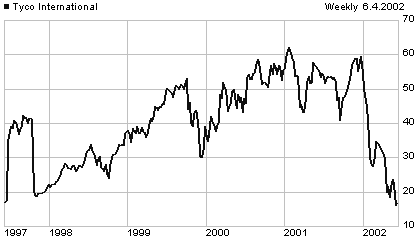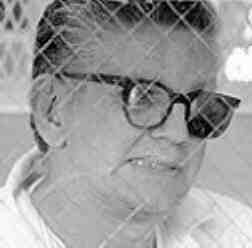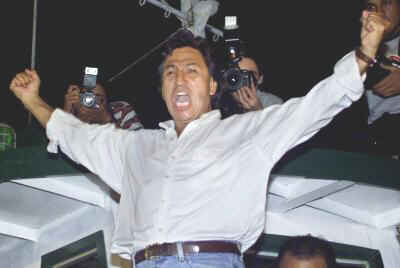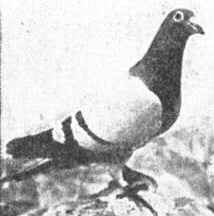Condamnés
à mort par la Révolution: ^top^
1794 (15 prairial an II):
AUSEL Pierre Jean Louis, teinturier, domicilié à Beauvais
(Oise), comme émigré, par le tribunal criminel dudit département.
COSTE Jean (dit Costet), laboureur, domicilié à Bannes
(Ardèche), comme séditieux, par le tribunal criminel dudit département.
SUGIER François, cultivateur, domicilié à Rabiac (Gard),
comme séditieux, par le tribunal criminel du département de l'Ardèche.
PEIFFER Elisabeth, femme Lambin, marchand, domiciliée à
Thionville (Moselle), comme distributrice de faux assignats, par le tribunal
criminel dudit département.
DEFLANDRE Jean Joseph, 58 ans né à Chanast, département
de l’Ain, brigadier de la 26ème division de gendarmerie, domicilié à Bouchain
(Nord), comme conspirateur, par la commission révolutionnaire de Paris.
Domiciliés dans le département du Gard, comme
conspirateurs, par le tribunal criminel dudit département:
ABAUZIT Pierre Firmin, nég. Admin. Du dép., dom. A Uzés.
GUIZOT Louis, agriculteur, administrateur du département
du Gard, domicilié à Ste Genies.
MARSIAL Jean, agriculteur
et administrateur du département du Gard, domicilié à Salle.
RAFFIN
Marc Antoine Jean, cultivateur et administrateur du département
du Gard, domicilié à Guisac.
RIBES Pierre, cultivateur
et administrateur du département, domicilié à Aiguevives.
ROQUIER
Jean Louis, administrateur du département, domicilié à Anduze.
SOULIER Pierre, ex ministre protestant, et administrateur
du département, domicilié à Sauves.
Par
le tribunal révolutionnaire de Paris:
FACESSOIS
Claude, 55 ans, né à Montfaucot (Aisne), traiteur, ex notable de
la commune de Sedan, domicilié à Lagny-Bagny (Ardennes), comme contre-révolutionnaire.
... comme conspirateurs:
BOISIERES Jean Antoine, agriculteur, ex administrateur
du département du Gard, domicilié à Montfrin, canton de Beaucaire (Gard).
CORDELOIS Alexandre, 36 ans, né à Cambray, ci-devant adjudant
de la Garde nationale du canton du Quesnoy, domicilié à Werlingue (Nord).
MARTIN Philippe, cordonnier, 65 ans, né et domicilié à
Delut (Meuse).
LEFRANC Claude, chirurgien appointé
dans le 7ème régiment d'hussards, né à Livry (Seine et Marne), domicilié
à Paris.
... domiciliés dans le département des Ardennes:
BECHET Louis Joseph, manufacturier, officier municipal,
domicilié à Philippeville, canton de Roc Libre.
GUIDET Arnoux,
soldat-invalide, domicilié à Jouval.
... domiciliés
à Sedan:
DELATRE Simon Jacques,
44 ans, tailleur, ex noble. — DESROUSSEAUX Louis Georges,
maire.
EDET Louis, menuisier notable, 66 ans, né
à Sedan. — FAUSSOIS Claude, traiteur notable.
FOURNIER Pierre Charles, épicier, officier municipal, 42
ans. — GIGOUX-VERMON Pierre, 44 ans, né à Sedan, brasseur,
ex notable de la dite commune.
GIGOUX-SAINT-SIMON Louis François,
61 ans, avant la révolution aide major de la place de Sedan, né à Marles
(Deux-Sèvres).
GROSLIN Augustin, père, notable. —
HENNECY Etienne, libraire né à Sedan, ex notable de la
commune, 46 ans.
HUSSIN Nicolas Rolin, père, 63 ans,
officier municipal, fabricant de draps, né à Sedan. — JEAMES
Louis Edet, charpentier, notable.
... et
notamment comme complices du traître Lafayette:
LECHANTEUR Jean Charles Nicolas, 31 ans, brasseur
et administrateur de district, né à Vrillambois.
LEGARDEUR
Jean Baptiste Delphine, fabricant et membre de la municipalité
de Sedan, 52 ans, né . à Sedan.
LEGARDEUR François Pierre,
fabricant de draps et président du bureau de paix, 60 ans, né à Verdun (Meuse).
LENOIR-PEYRE Jean Louis, teinturier et procureur de la
commune, 39 ans, né à Sedan.
LUDET, chef armurier,
64 ans, né . à Sedan, ex notable de ladite commune.
MESMER
Henri, laboureur, ex notable de la commune de Sedan, 52 ans, né
à Sedan.
NOEL
Michel (dit Laurant), confiseur, officier municipal, 63 ans,
né à Sedan, ... et comme contre-révolutionnaire..
... comme
complices des conspirations et complots formés avec le tyran Capet,
ses agents, et notamment Lafayette
en prenant et publiant de concert avec lui, des arrêtés et proclamations
en date des 12 et 14 août 1792, tendantes à protéger sa trahison, et en
retenant comme otage des représentants du peuple délégués par le corps législatif:
VERMON Pierre Gibou, brasseur, ex notable, 44 ans,
né à Sedan.
PETIT Jean Baptiste, fils, médecin et
officier municipal, 50 ans, natif de Mézières (Ardennes).
ROUSSEAU
Antoine Charles, manufacturier, notable de la commune de Sedan,
56 ans, natif de Paris.
SAINT-PIERRE Yrou Georges Jacques,
55 ans, officier municipal de Sedan, natif d’Auxaussyeux (Seine Inférieure).
SERVAIS Hermes, manufacturier de poêles, ex notable de
la commune de Sedan, 66 ans.
VAROQUIER Nicolas, notable
de la commune de Sedan, 62 ans, natif de Givry.
1793:
Domiciliés dans le département des Landes,
comme contre-révolutionnaires, par le tribunal criminel dudit département:
DUBROCA Pierre, domestique, domicilié à Couyon — DUCLA
Jean, (dit Machéhé), cadet, domicilié à Montgaillard. |
 ^
On
a 03 June:
^
On
a 03 June: Tyco International's board forces the resignation of its CEO Dennis Kozlowski.
If it had fired him, Tyco would have probably had to pay Kozlowski a severance
package of at least $120 million. Kozlowski also resigned on 03 June as
a director of the Raytheon Company.
Tyco International's board forces the resignation of its CEO Dennis Kozlowski.
If it had fired him, Tyco would have probably had to pay Kozlowski a severance
package of at least $120 million. Kozlowski also resigned on 03 June as
a director of the Raytheon Company.  2002
The US Supreme Court unanimously rejects an appeal by Texas, which wanted
to execute Calvin Jerold Burdine, even though his lawyer Joe Frank Cannon
(died since) slept some 10 times for up to 10 minutes each during Burdine's
23~27 Jan 1984 trial in Houston for the 18 April 1983 stabbing murder of
his homosexual mate W.T. “Dub” Wise at the trailer home the two
shared in Houston during a robbery which Burdine admits perpetrating jointly
with Douglas McCreight. Burdine said he was angry because Wise had asked
him to prostitute himself to earn more money. However Burdine pled not guilty,
and McCreight pled guilty to the actual murder, yet McCreight was released
from prison on parole after serving 8 years.
2002
The US Supreme Court unanimously rejects an appeal by Texas, which wanted
to execute Calvin Jerold Burdine, even though his lawyer Joe Frank Cannon
(died since) slept some 10 times for up to 10 minutes each during Burdine's
23~27 Jan 1984 trial in Houston for the 18 April 1983 stabbing murder of
his homosexual mate W.T. “Dub” Wise at the trailer home the two
shared in Houston during a robbery which Burdine admits perpetrating jointly
with Douglas McCreight. Burdine said he was angry because Wise had asked
him to prostitute himself to earn more money. However Burdine pled not guilty,
and McCreight pled guilty to the actual murder, yet McCreight was released
from prison on parole after serving 8 years. [photo:
Toledo greets supporters from a boat after a trip on Nanai river, in Iquitos,
29 May 2001 >]
[photo:
Toledo greets supporters from a boat after a trip on Nanai river, in Iquitos,
29 May 2001 >] 
